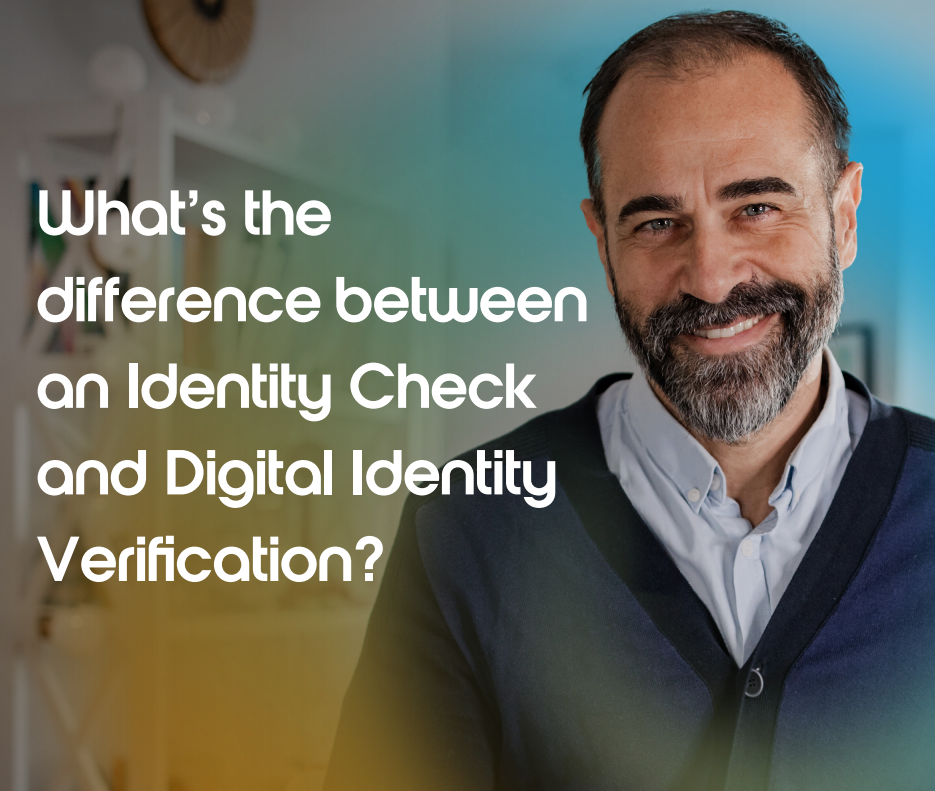The government recently published its plans on digital identities, centring around a new framework that will govern their future use.
In our digital age, the ability to establish trust is becoming more and more important, particularly online.
Digital identities are set to change the way we verify our identity to others – not just for DBS Checks, but in lots of different situations.
In this article, we’ll explore what digital identities are and what the new framework means.
What are digital identities?
A digital identity is a digital representation of who you are. It enables you to prove who you are during transactions and interactions, and can be used in person or online.
In other words, rather than showing a passport, driving licence or other paper document to a third party, you’ll be able to provide the information digitally.
For example, you could use your digital identity when renting a car, opening a bank account, buying a house or getting a DBS Check.
Digital identity should not be confused with a digital ID or the concept of national identity cards. Instead, a digital identity is a secure digital safe in which you keep your personal details – all the data that is currently on those paper documents.
Each time you use your digital identity, you’ll only need to share the data that is necessary for that particular transaction or service.
For example, when renting a car you would need to show details about your driving licence, and when opening a bank account you may need to prove who you are and where you live.
A digital identity can put you in control of how much of your data you manage and share. It can provide a secure way of storing your personal data and can prevent organisations from obtaining information that you don’t want to share with them.
What is the trust framework?
The government’s plans centre around the UK digital identity and attributes trust framework.
The trust framework is a set of rules and standards that organisations agree to follow. If an organisation is part of the trust framework, it means they adhere to agreed requirements that safeguard people’s data and protect their privacy.
The trust framework sets out requirements that tell organisations what ‘good’ identity verification looks like. It also includes rules for:
- Ensuring products and services are inclusive
- Privacy and data protection
- Security
- Fraud management
In the future, the government plans to introduce a ‘trust mark’ that will tell you that an organisation is part of the trust framework.
This would be a protected symbol that indicates the organisation adheres to the framework’s requirements and has been certified against these standards.
How will digital identities work in practice?
Here’s an example scenario:
Saanvi would like to rent a home and also open a bank account.
Instead of proving her identity to the estate agent and the bank separately, she decides to create a digital identity.
Saanvi finds an identity provider online. She sees the protected trust mark on their website, so she knows she can trust them with her data.
She registers with the identity provider and they create her digital identity, checking her identity documents and setting up a secure multi-factor authentication login for her.
Saanvi can then use this digital identity with both the estate agent and the bank, without having to prove her identity each time.
The estate agent and bank know they can trust Saanvi’s digital identity because it comes from a trusted identity provider who follows and has been certified against the government’s trust framework.
What are the benefits of digital identities?
Using a digital identity will mean you don’t have to rely on offline channels (like post or phone) to access services or interact with organisations.
Moving these interactions and transactions online may also:
- Save organisations time and money
- Be quicker and easier for users
- Reduce the risk of fraud for users and organisations
- Encourage innovation by enabling organisations to develop more services
- Reduce the risk of mistakes that come with manual data management
In addition, coronavirus restrictions mean that there are fewer opportunities for people to do things in person. Because of this it can be safer, as well as easier, to complete some transactions and interactions online.
How digital identities might work online and offline
When carrying out transactions online, you may sometimes need to share information about your identity – for example, when buying shares or opening a savings account.
Currently, these transactions require paper documents to be sent or scanned. In future, you’ll be able to share your digital identity easily and instantly.
This will work for offline transactions too. We can expect to see apps that enable you to show parts of your digital identity to others, perhaps showing QR codes that a third party can scan to verify your identity details.
You’ll also be able to use digital identities to make sure that the person or organisation you’re dealing with is who they claim to be before releasing any of your information. This will make it much more difficult for scammers and other criminals to operate.
What about DBS Checks?
We know processing passports and paper documents for DBS Checks takes time – and it’s even more difficult when you can’t meet face-to-face.
When digital identities become a reality, we’ll be updating our DBS Check and screening solutions to allow you to use them.
In the meantime, don’t hesitate to get in touch if you need help with DBS Checks or the current rules for using paper documents – we’re always happy to chat.







